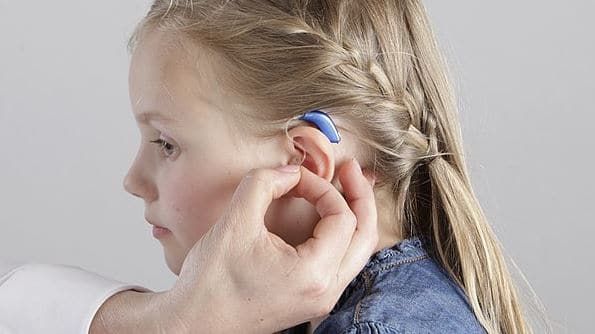We know, for sure, that kids need to hear all day long in order to learn language, and to be ready to read. Typical hearing kids hear 24 hours a day. Children with hearing loss hear only when they have their technology on.
Here is what else we know:
- Typical children hear 46 million words by age 4 years
- Children need 20,000 hours of listening to learn to read. (That would mean listening for 12 hour days for 1,667 days)
- Children with hearing loss require three times the exposure to learn new words and concepts.
So, what does this mean for a child with hearing loss?
If a child wears hearing aids 4 hours a day, it will take 6 years for the child to hear what a typical child who does not need hearing aids hears in one year. That means that the child with hearing loss will have significantly less auditory input, resulting in less language exposure, which will result in poorer language and poorer reading.
What can we do to change this outcome?
We need to help families to keep hearing aids and other technology on their child’s head. For children with hearing loss, time is of the essence. There is no turning back. We cannot make up for lost listening time when the child is older. When children do not receive sufficient auditory exposure, the auditory portion of the brain will shrink and the visual cortex will expand to take over the area usually associated with audition.
“Children with hearing loss require timely support to prevent long-term language and reading difficulties. To counteract these challenges, it’s crucial to assist families in ensuring consistent use of hearing aids and technology, as there’s no way to recover lost auditory development once critical periods have passed.”
What can we do to help families keep hearing technology on a child’s head?
- We need to help families understand how important it is to use technology full time.
- We need to help families find the appropriate retention devices that will keep the hearing aids on the child’s head full time. These may include devices such as Huggies, Ear Gear, Critter Clips, and toupee tape.
- We need to teach families to make sure that their children’s technology is working each and every day. Parents can never assume. They need to check their kids’ hearing aids every day.
- We need to test to be sure that a child is receiving enough benefit from the hearing aids, and can hear both normal and soft speech.
It is everyone’s job
Making sure technology is working and on is everyone’s responsibility. Audiologists need to be sure parents understand why technology is important and how to check technology. Parents need to check technology daily and take action if it is not working.
Children need to be taught to pay attention to whether or not technology is working and report problems.
Teachers and therapists need to pay attention to whether the child is responding well with technology and, if not, get help. No one person can do this job alone, but if we all work together, we can be certain that we are providing good auditory access to kids with hearing loss.






